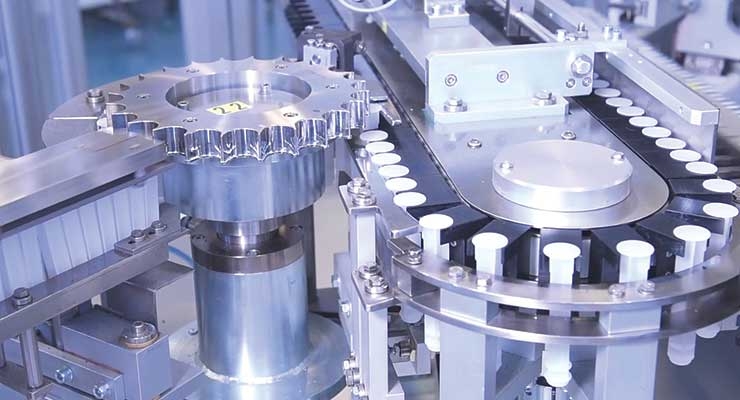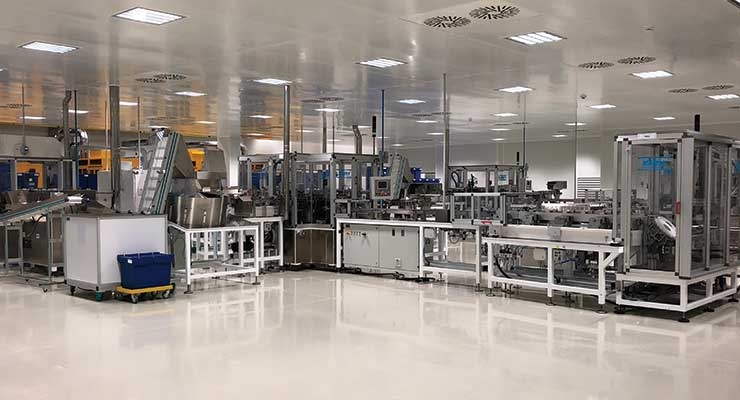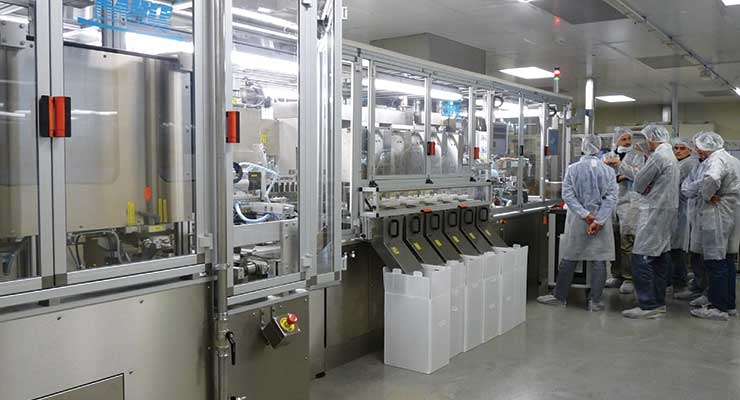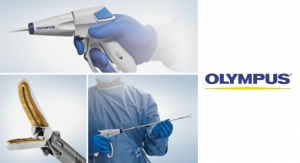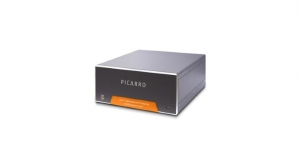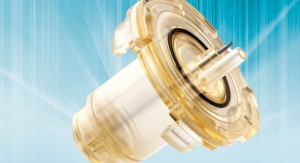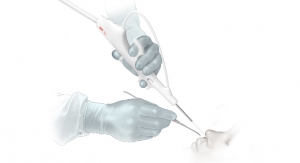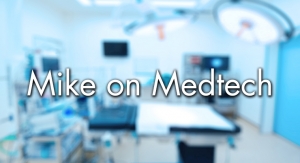Mark Crawford, Contributing Writer09.09.19
Assembly and automation are still going strong as medical device manufacturers (MDMs) continue to outsource these services to trusted contract manufacturers (CMs). Needs vary widely from project to project, depending on device design, complexity, materials, production volume, and end-use application. Sometimes the solution is obvious and straightforward; other projects require some creativity and innovation. Automation, in particular, is in high demand for maximizing quality, eliminating variables that impact reliability, reducing costs, and speeding up time to market. Automation manufacturers see the need for advanced equipment and continue to bring out new models with added capabilities that improve assembly operations.
“Expanding global demand for low-cost healthcare, coupled with rising labor costs and increased quality demands, are creating a perfect storm fueling the demand for automation,” said Mark Burzynski, president of The Arthur G. Russell Company, a Bristol, Conn.-based designer and builder of custom automated assembly and test systems for the high-volume medical device market.
“Automation increases the reliability and repeatability of any process, allowing manufacturing to run virtually lights out,” added Eugenio Dolci, technical director at In’Tech Toulon, a French manufacturing facility for Memphis, Tenn.-based In’Tech Medical, a global manufacturer of orthopedic products. “Automation can be part of the machining, finishing, and inspection processes, from handling raw material to documenting the final inspection.”
To provide solutions for the increasingly challenging assembly and automation demands from their OEMs, CMs must remain open to new ideas and approaches regarding automation and other Industry 4.0 and the Internet of Things (IoT) technologies that can improve assembly operations, especially as products get smaller and more complex. Miniaturization puts increased pressure on not only automation suppliers, but also component suppliers, to produce high-volume components at much tighter tolerances than before.
“For example, what was once allowable flash is no longer tolerable,” said John Wuschner, vice president of engineering and quality for Kahle Automation, a Morristown, N.J.-based provider of high-speed automation and process equipment for the medical device, pharmaceutical, and healthcare industries. “Feeders now require higher-precision tooling since small variations in a track are now a larger percentage of the total component size and more easily cause jams.”
And even though automation systems are overall coming down in price, the complexity of advanced machine control systems and programs continues to rapidly advance. As much as OEMs want to control costs, they also see the advantage of IoT-enabled features such as operator interface unit screens, alarms, diagnostics, and data analytics—which drive up equipment costs.
“Capabilities like these have pushed the cost of the average machine control system to about half of the cost of a project, compared to about 20 percent in the 1990s,” said Burzynski.
These extra costs, however, can be recovered down the road through improved operational efficiencies, less downtime, and faster speed to market—sometimes only in a matter of months.
What OEMs Want
The basic needs of OEMs don’t change—they want greater functionality, tighter tolerances, faster speed to market, and lower costs. Increased quality control as well as reliability and repeatabilty of process are also a must, which become more challenging for CMs as their OEMs embrace miniaturization and more complex geometries.
“We’re in the plastic-joining business, and what we continue to see are devices—portable, wearable, implantable—that contain ever smaller and even more precise plastic and electronic parts,” said Tarick Walton, global product manager of ultrasonics for Emerson Automation Solutions, a Danbury, Conn.-based provider of automation technologies to the medical device industry. “Miniaturization is everything. Plastic parts are getting smaller in every dimension, thinner, and lighter weight, with smaller weld joints, smaller contact surfaces, and finer edges and fit requirements.”
Smaller generally means higher development costs. OEMs are eager to offset these cost increases in any way they can, often through improvements in manufacturing efficiency—even small gains can add up to significant savings in time and money.
“OEMs are especially looking for cost reductions associated with process optimizations,” said Dolci. “For example, plug-and-play programs that integrate automation make it easy to scale up, once the process is proven out by production-equivalent verification and validation prototypes.”
OEMs expect their CMs to come up with both practical and creative ways to streamline operations, speed up assembly, reduce costs, and get to market faster. For example, as ultrasonic welding processes scale up, they utilize more operators and different automation processes, which require a different method of data management. “Our approach at Emerson is to ensure that our welders—and all channels of incoming weld data—can be connected into a factory data system, which enables process engineers to review data streams and identify and respond to production concerns quickly,” said Walton.
As intent as OEMs are to find cost savings however they can, they are equally focused on getting to market—fast. They constantly push their CMs to get products out as quickly as possible. OEMs are also always looking for quick turnarounds on proposals so they can submit their own proposals to their customers, who are keen on shortening their product development cycles as much as they can.
However, OEMs must remember that “developing a proposal isn’t necessarily quick or easy—for assembly and automation, proposal development often requires concepting, risk assessment, and cost/time estimating,” said Wuschner. “The process often has to be completed iteratively, with minimal information at the start evolving into more and more details and changes to automation concepts as the design and processes change, or as information becomes more available.”
Wuschner also noted that an increased number of customers want to automate processes they had previously sent offshore for manual assembly. This often requires the development of customized handling and processing techniques for difficult components and assemblies. “This presents a challenge for automation suppliers who have consolidated to a standard chassis, where there is less flexibility,” he said.
Technology Trends Advance
Robotics, automation, and vision systems are becoming easier to program and use, often with “plug and play” capabilities. Automation systems are increasingly modular and scalable. This makes CMs more nimble, allowing them to put assembly systems together quickly to meet new market opportunities, or fluctuating volume demands. New versions with improved capabilities (especially software) seem to come out every month.
Advances in intelligent control systems, safety systems, and computer power have made real-time, human-robot collaboration a reality across a variety of manufacturing industries. Sensor technologies with shut-off systems can immediately deactivate collaborative robots if any variance is detected in their behavior, allowing humans to work safely beside them. Collaborative six-axis robots are getting smaller and more lightweight and require no safety barriers, which reduces their footprint on the shop floor.
A blog posting on the Universal Robots website explained that “Cobots have become a critical competitive advantage for small and mid-sized specialty medical device manufacturers and is helping to fill automation gaps for larger OEMs with processes that couldn’t be cost-effectively automated in the past.”
Cobots can be added to modular robotic cells to meet fluctuating production demands. Other key cobot benefits include flexible deployment, safe operation alongside human workers, easy programming and implementation, and fast return on investment. Integrating collaborative robots into assembly cells can free up full-time workers and move them to higher-value tasks. Return on investment on integrating cobots into assembly cells can be as short as three to six months, especially for large projects.
Adhesives
Adhesives are used in medical device assembly to join or seal multiple parts. Popular adhesives include silicones, polyurethanes, and polysulfides. The type of adhesive formulation used depends on multiple factors, especially the chemical and physical properties of the materials to be bonded and the end-use application for the device. Advanced adhesives can also replace mechanical fasteners for improved performance, reduced costs, and greater resistance to sterilization processes. Pressure-sensitive adhesive tapes can also be an effective solution for joining small components in miniaturized devices.
While there are many bonding techniques available, light-curing technologies offer multiple benefits. These adhesives work with metals, glass, composites, and many plastics. They cure within seconds at ambient temperature without any oxygen inhibition, depending on wavelength, intensity, adhesive thickness, and distance from the light source. Other benefits of medical grade UV/visible light cure compounds are thin bond lines, thermal stability, and good strong resistance to sterilization technologies, including gamma radiation, autoclaving, hydrogen peroxide, and ethylene oxide.
Low-wicking, LED-curable, and moisture-resistant adhesives improve the range of design options for many medical devices. “The development of new needle bonding adhesives, for example, when properly matched with jetting applicators and LED UV curing systems, has greatly improved the efficiency and reliability of the needle bonding process,” said Burzynski.
Intertronics, an Oxfordshire, England-based provider of adhesives, sealants, and coatings, manufactures the DYMAX MD UV adhesives for medical device assembly, including needle assemblies. Curing occurs at room temperature upon exposure to UV and visible light.
“The combination of high intensity visible and longwave UV light greatly enhances the speed and depth of cure,” the company explains on its website. “This advantage offers the greatest benefit in needle bonding applications involving opaque hubs and deep wells.”
Welding
Ultrasonic welding is a preferred approach for attaching small or delicate or complex-shaped parts, or different materials, in smaller and more complex devices. As parts become lighter weight, smaller, and thinner in every dimension, more companies rely on ultrasonic welding to attach parts for delicate devices, including those with embedded electronics. The need to bond smaller, lighter, and increasingly delicate plastic parts is also driving innovation, requiring ultrasonic welding manufacturers to provide greater precision and tunable control with increasingly less actuation force—the force that pushes down on the interface between two plastic parts and triggers the start of the welding process.
This process can be a bit tricky—too much frictional heat can melt through the parts and too much actuation or weld force can distort, warp, or damage them even as the weld process starts. “However, the latest generation of ultrasonic welders provides a new level of precision control over ultra-low forces, right down to 5N, or about one pound of trigger force, depending on the application,” said Walton. “This sensitive force control is comparable to a feather’s touch.”
This makes ultrasonic welding ideal for highly sensitive parts, especially those with electronic components, such as power modules and miniature printed circuit boards. In addition, ultrasonic welding is widely adaptable and can be tuned to changing product design and assembly requirements, so that the energy and force required for proper part joining can be balanced to achieve the gentleness required to prevent electronics damage.
The Emerson Branson GSX Ultrasonic Welding Platform is specifically designed with an advanced, electro-mechanical actuation system that precisely delivers ultra-low trigger and weld forces. Equipped with a precise linear encoder and a multi-core processor, this actuation system instantly adjusts to real-time feedback, “ensuring high precision and repeatability across multiple welders while limiting part variability to just microns,” said Walton. “The GSX also features smart software capabilities such as the position tracking ball, which allows users to intuitively access weld and graph data at their fingertips.” Other benefits include a quick-stack exchange system that ensures tooling alignment, reducing part switchover times from more than an hour to just minutes.
The GSX is also Industry 4.0/IIoT (Industrial Internet of Things)-enabled, providing access to performance and diagnostic data and supporting production efficiency and traceability that complies with industry regulatory standards such as FDA 21 CFR Part 11. It provides barcode readers, a robotic interface, ethernet connectivity, discrete I/Os for automation, and the industry’s most comprehensive weld data outputs for statistical process and product quality control.
Customized Equipment
Kahle Automation has developed its own feeding systems and continues to improve its efficiencies in terms of both production uptime and energy use. “We recently developed a new vibration control architecture that has allowed us to see energy uses on our feeders drop to around 25 percent of what they were prior to implementation,” said Wuschner. “This not only saves energy, but also reduces wear on components [longer spring life] and eliminates the need to adjust the controller during the shift as the mechanical components warm up.”
Kahle Automation recently contracted with a client to build a machine to assemble extremely small needle assemblies. The cannula were oriented radially and press-fit into a roughly 5-mm-square cube, glued, and cured at a rate of 630 ppm. The cannula are 18 G x 6 mm long and even the cannula manufacturer had trouble handling the material. None of the existing feeding and handling methods worked effectively at this short length. To meet this challenge, Kahle created a new method of feeding and orienting that was specific to this particular cannula. A separate development took place to determine the most practical method for press-fitting the cannula that would prevent blockage, since the ID flow is very critical in the final application.
“Old paradigms had to be set aside and extensive development was undertaken to first singulate from bulk, then orient axially, and finally radially,” said Wuschner. “A 30-ppm pilot system was developed to prove the development on a larger scale first—the production line is now operational at 630 ppm.”
Higher-precision tooling and components also require changes from the customer regarding their approach to training on the equipment. “As machines become more sophisticated, machine technicians must become more system-oriented in their approach to troubleshooting,” said Wuschner. “The diagnostic tools they will use require a higher level of understanding and the solutions a more delicate approach.”
“More technologically advanced equipment also requires technologically advanced support personnel, which are in short supply,” Burzynski added.
Collaboration Is Key
As products become more complex, and OEMs want higher quality, improved functionality, faster speed to market, and lower costs, design for manufacturability (DFM) becomes more crucial. DFM brings all key partners into the creative process. Still today, a surprising number of OEMs do not give serious consideration to assembly and automation. In fact, part of the DFM process includes designing for automation. This includes working with the CM to create cost-effective solutions for proof of concept, which builds confidence in the design and process before investing in expensive equipment. Planning for automation and assembly during the product design phase becomes increasingly important as more devices are designed with the Internet of Things and Industry 4.0 in mind, which continue to revolutionize the production capabilities of factory automation and assembly.
“Everyone has paradigms in this industry and there are times when customers have pre-conceived ideas of ‘the best way’ to do something, based on their own experience or the limits of technology at the time their method was developed,” said Wuschner. “This can, at times, lead to complacency with their existing processes and a reluctance to try new technologies.”
This is when MDMs should pull their trusted subcontractors into the design process and benefit from their knowledge experience and advice, prior to making significant investments in the production process (for example, molds). One of the biggest questions a team must answer is, simply, can a product be manufactured at a low-enough cost so that it will be profitable? What design or process modifications are needed? Automation and assembly are key factors in that decision.
“Being in the custom automation business for 100 years provides Kahle with a great deal of experience, as well as exposure to many different technologies,” added Wuschner. “We see all kinds of operations around the world and have worked on many different products. Process applications or feeding systems developed for one product often give us a knowledge base that we can successfully apply to process challenges for customers in other markets, such as medical devices.”
Mark Crawford is a full-time freelance business and marketing/communications writer based in Madison, Wis. His clients range from startups to global manufacturing leaders. He also writes a variety of feature articles for regional and national publications and is the author of five books.
“Expanding global demand for low-cost healthcare, coupled with rising labor costs and increased quality demands, are creating a perfect storm fueling the demand for automation,” said Mark Burzynski, president of The Arthur G. Russell Company, a Bristol, Conn.-based designer and builder of custom automated assembly and test systems for the high-volume medical device market.
“Automation increases the reliability and repeatability of any process, allowing manufacturing to run virtually lights out,” added Eugenio Dolci, technical director at In’Tech Toulon, a French manufacturing facility for Memphis, Tenn.-based In’Tech Medical, a global manufacturer of orthopedic products. “Automation can be part of the machining, finishing, and inspection processes, from handling raw material to documenting the final inspection.”
To provide solutions for the increasingly challenging assembly and automation demands from their OEMs, CMs must remain open to new ideas and approaches regarding automation and other Industry 4.0 and the Internet of Things (IoT) technologies that can improve assembly operations, especially as products get smaller and more complex. Miniaturization puts increased pressure on not only automation suppliers, but also component suppliers, to produce high-volume components at much tighter tolerances than before.
“For example, what was once allowable flash is no longer tolerable,” said John Wuschner, vice president of engineering and quality for Kahle Automation, a Morristown, N.J.-based provider of high-speed automation and process equipment for the medical device, pharmaceutical, and healthcare industries. “Feeders now require higher-precision tooling since small variations in a track are now a larger percentage of the total component size and more easily cause jams.”
And even though automation systems are overall coming down in price, the complexity of advanced machine control systems and programs continues to rapidly advance. As much as OEMs want to control costs, they also see the advantage of IoT-enabled features such as operator interface unit screens, alarms, diagnostics, and data analytics—which drive up equipment costs.
“Capabilities like these have pushed the cost of the average machine control system to about half of the cost of a project, compared to about 20 percent in the 1990s,” said Burzynski.
These extra costs, however, can be recovered down the road through improved operational efficiencies, less downtime, and faster speed to market—sometimes only in a matter of months.
What OEMs Want
The basic needs of OEMs don’t change—they want greater functionality, tighter tolerances, faster speed to market, and lower costs. Increased quality control as well as reliability and repeatabilty of process are also a must, which become more challenging for CMs as their OEMs embrace miniaturization and more complex geometries.
“We’re in the plastic-joining business, and what we continue to see are devices—portable, wearable, implantable—that contain ever smaller and even more precise plastic and electronic parts,” said Tarick Walton, global product manager of ultrasonics for Emerson Automation Solutions, a Danbury, Conn.-based provider of automation technologies to the medical device industry. “Miniaturization is everything. Plastic parts are getting smaller in every dimension, thinner, and lighter weight, with smaller weld joints, smaller contact surfaces, and finer edges and fit requirements.”
Smaller generally means higher development costs. OEMs are eager to offset these cost increases in any way they can, often through improvements in manufacturing efficiency—even small gains can add up to significant savings in time and money.
“OEMs are especially looking for cost reductions associated with process optimizations,” said Dolci. “For example, plug-and-play programs that integrate automation make it easy to scale up, once the process is proven out by production-equivalent verification and validation prototypes.”
OEMs expect their CMs to come up with both practical and creative ways to streamline operations, speed up assembly, reduce costs, and get to market faster. For example, as ultrasonic welding processes scale up, they utilize more operators and different automation processes, which require a different method of data management. “Our approach at Emerson is to ensure that our welders—and all channels of incoming weld data—can be connected into a factory data system, which enables process engineers to review data streams and identify and respond to production concerns quickly,” said Walton.
As intent as OEMs are to find cost savings however they can, they are equally focused on getting to market—fast. They constantly push their CMs to get products out as quickly as possible. OEMs are also always looking for quick turnarounds on proposals so they can submit their own proposals to their customers, who are keen on shortening their product development cycles as much as they can.
However, OEMs must remember that “developing a proposal isn’t necessarily quick or easy—for assembly and automation, proposal development often requires concepting, risk assessment, and cost/time estimating,” said Wuschner. “The process often has to be completed iteratively, with minimal information at the start evolving into more and more details and changes to automation concepts as the design and processes change, or as information becomes more available.”
Wuschner also noted that an increased number of customers want to automate processes they had previously sent offshore for manual assembly. This often requires the development of customized handling and processing techniques for difficult components and assemblies. “This presents a challenge for automation suppliers who have consolidated to a standard chassis, where there is less flexibility,” he said.
Technology Trends Advance
Robotics, automation, and vision systems are becoming easier to program and use, often with “plug and play” capabilities. Automation systems are increasingly modular and scalable. This makes CMs more nimble, allowing them to put assembly systems together quickly to meet new market opportunities, or fluctuating volume demands. New versions with improved capabilities (especially software) seem to come out every month.
Advances in intelligent control systems, safety systems, and computer power have made real-time, human-robot collaboration a reality across a variety of manufacturing industries. Sensor technologies with shut-off systems can immediately deactivate collaborative robots if any variance is detected in their behavior, allowing humans to work safely beside them. Collaborative six-axis robots are getting smaller and more lightweight and require no safety barriers, which reduces their footprint on the shop floor.
A blog posting on the Universal Robots website explained that “Cobots have become a critical competitive advantage for small and mid-sized specialty medical device manufacturers and is helping to fill automation gaps for larger OEMs with processes that couldn’t be cost-effectively automated in the past.”
Cobots can be added to modular robotic cells to meet fluctuating production demands. Other key cobot benefits include flexible deployment, safe operation alongside human workers, easy programming and implementation, and fast return on investment. Integrating collaborative robots into assembly cells can free up full-time workers and move them to higher-value tasks. Return on investment on integrating cobots into assembly cells can be as short as three to six months, especially for large projects.
Adhesives
Adhesives are used in medical device assembly to join or seal multiple parts. Popular adhesives include silicones, polyurethanes, and polysulfides. The type of adhesive formulation used depends on multiple factors, especially the chemical and physical properties of the materials to be bonded and the end-use application for the device. Advanced adhesives can also replace mechanical fasteners for improved performance, reduced costs, and greater resistance to sterilization processes. Pressure-sensitive adhesive tapes can also be an effective solution for joining small components in miniaturized devices.
While there are many bonding techniques available, light-curing technologies offer multiple benefits. These adhesives work with metals, glass, composites, and many plastics. They cure within seconds at ambient temperature without any oxygen inhibition, depending on wavelength, intensity, adhesive thickness, and distance from the light source. Other benefits of medical grade UV/visible light cure compounds are thin bond lines, thermal stability, and good strong resistance to sterilization technologies, including gamma radiation, autoclaving, hydrogen peroxide, and ethylene oxide.
Low-wicking, LED-curable, and moisture-resistant adhesives improve the range of design options for many medical devices. “The development of new needle bonding adhesives, for example, when properly matched with jetting applicators and LED UV curing systems, has greatly improved the efficiency and reliability of the needle bonding process,” said Burzynski.
Intertronics, an Oxfordshire, England-based provider of adhesives, sealants, and coatings, manufactures the DYMAX MD UV adhesives for medical device assembly, including needle assemblies. Curing occurs at room temperature upon exposure to UV and visible light.
“The combination of high intensity visible and longwave UV light greatly enhances the speed and depth of cure,” the company explains on its website. “This advantage offers the greatest benefit in needle bonding applications involving opaque hubs and deep wells.”
Welding
Ultrasonic welding is a preferred approach for attaching small or delicate or complex-shaped parts, or different materials, in smaller and more complex devices. As parts become lighter weight, smaller, and thinner in every dimension, more companies rely on ultrasonic welding to attach parts for delicate devices, including those with embedded electronics. The need to bond smaller, lighter, and increasingly delicate plastic parts is also driving innovation, requiring ultrasonic welding manufacturers to provide greater precision and tunable control with increasingly less actuation force—the force that pushes down on the interface between two plastic parts and triggers the start of the welding process.
This process can be a bit tricky—too much frictional heat can melt through the parts and too much actuation or weld force can distort, warp, or damage them even as the weld process starts. “However, the latest generation of ultrasonic welders provides a new level of precision control over ultra-low forces, right down to 5N, or about one pound of trigger force, depending on the application,” said Walton. “This sensitive force control is comparable to a feather’s touch.”
This makes ultrasonic welding ideal for highly sensitive parts, especially those with electronic components, such as power modules and miniature printed circuit boards. In addition, ultrasonic welding is widely adaptable and can be tuned to changing product design and assembly requirements, so that the energy and force required for proper part joining can be balanced to achieve the gentleness required to prevent electronics damage.
The Emerson Branson GSX Ultrasonic Welding Platform is specifically designed with an advanced, electro-mechanical actuation system that precisely delivers ultra-low trigger and weld forces. Equipped with a precise linear encoder and a multi-core processor, this actuation system instantly adjusts to real-time feedback, “ensuring high precision and repeatability across multiple welders while limiting part variability to just microns,” said Walton. “The GSX also features smart software capabilities such as the position tracking ball, which allows users to intuitively access weld and graph data at their fingertips.” Other benefits include a quick-stack exchange system that ensures tooling alignment, reducing part switchover times from more than an hour to just minutes.
The GSX is also Industry 4.0/IIoT (Industrial Internet of Things)-enabled, providing access to performance and diagnostic data and supporting production efficiency and traceability that complies with industry regulatory standards such as FDA 21 CFR Part 11. It provides barcode readers, a robotic interface, ethernet connectivity, discrete I/Os for automation, and the industry’s most comprehensive weld data outputs for statistical process and product quality control.
Customized Equipment
Kahle Automation has developed its own feeding systems and continues to improve its efficiencies in terms of both production uptime and energy use. “We recently developed a new vibration control architecture that has allowed us to see energy uses on our feeders drop to around 25 percent of what they were prior to implementation,” said Wuschner. “This not only saves energy, but also reduces wear on components [longer spring life] and eliminates the need to adjust the controller during the shift as the mechanical components warm up.”
Kahle Automation recently contracted with a client to build a machine to assemble extremely small needle assemblies. The cannula were oriented radially and press-fit into a roughly 5-mm-square cube, glued, and cured at a rate of 630 ppm. The cannula are 18 G x 6 mm long and even the cannula manufacturer had trouble handling the material. None of the existing feeding and handling methods worked effectively at this short length. To meet this challenge, Kahle created a new method of feeding and orienting that was specific to this particular cannula. A separate development took place to determine the most practical method for press-fitting the cannula that would prevent blockage, since the ID flow is very critical in the final application.
“Old paradigms had to be set aside and extensive development was undertaken to first singulate from bulk, then orient axially, and finally radially,” said Wuschner. “A 30-ppm pilot system was developed to prove the development on a larger scale first—the production line is now operational at 630 ppm.”
Higher-precision tooling and components also require changes from the customer regarding their approach to training on the equipment. “As machines become more sophisticated, machine technicians must become more system-oriented in their approach to troubleshooting,” said Wuschner. “The diagnostic tools they will use require a higher level of understanding and the solutions a more delicate approach.”
“More technologically advanced equipment also requires technologically advanced support personnel, which are in short supply,” Burzynski added.
Collaboration Is Key
As products become more complex, and OEMs want higher quality, improved functionality, faster speed to market, and lower costs, design for manufacturability (DFM) becomes more crucial. DFM brings all key partners into the creative process. Still today, a surprising number of OEMs do not give serious consideration to assembly and automation. In fact, part of the DFM process includes designing for automation. This includes working with the CM to create cost-effective solutions for proof of concept, which builds confidence in the design and process before investing in expensive equipment. Planning for automation and assembly during the product design phase becomes increasingly important as more devices are designed with the Internet of Things and Industry 4.0 in mind, which continue to revolutionize the production capabilities of factory automation and assembly.
“Everyone has paradigms in this industry and there are times when customers have pre-conceived ideas of ‘the best way’ to do something, based on their own experience or the limits of technology at the time their method was developed,” said Wuschner. “This can, at times, lead to complacency with their existing processes and a reluctance to try new technologies.”
This is when MDMs should pull their trusted subcontractors into the design process and benefit from their knowledge experience and advice, prior to making significant investments in the production process (for example, molds). One of the biggest questions a team must answer is, simply, can a product be manufactured at a low-enough cost so that it will be profitable? What design or process modifications are needed? Automation and assembly are key factors in that decision.
“Being in the custom automation business for 100 years provides Kahle with a great deal of experience, as well as exposure to many different technologies,” added Wuschner. “We see all kinds of operations around the world and have worked on many different products. Process applications or feeding systems developed for one product often give us a knowledge base that we can successfully apply to process challenges for customers in other markets, such as medical devices.”
Mark Crawford is a full-time freelance business and marketing/communications writer based in Madison, Wis. His clients range from startups to global manufacturing leaders. He also writes a variety of feature articles for regional and national publications and is the author of five books.

